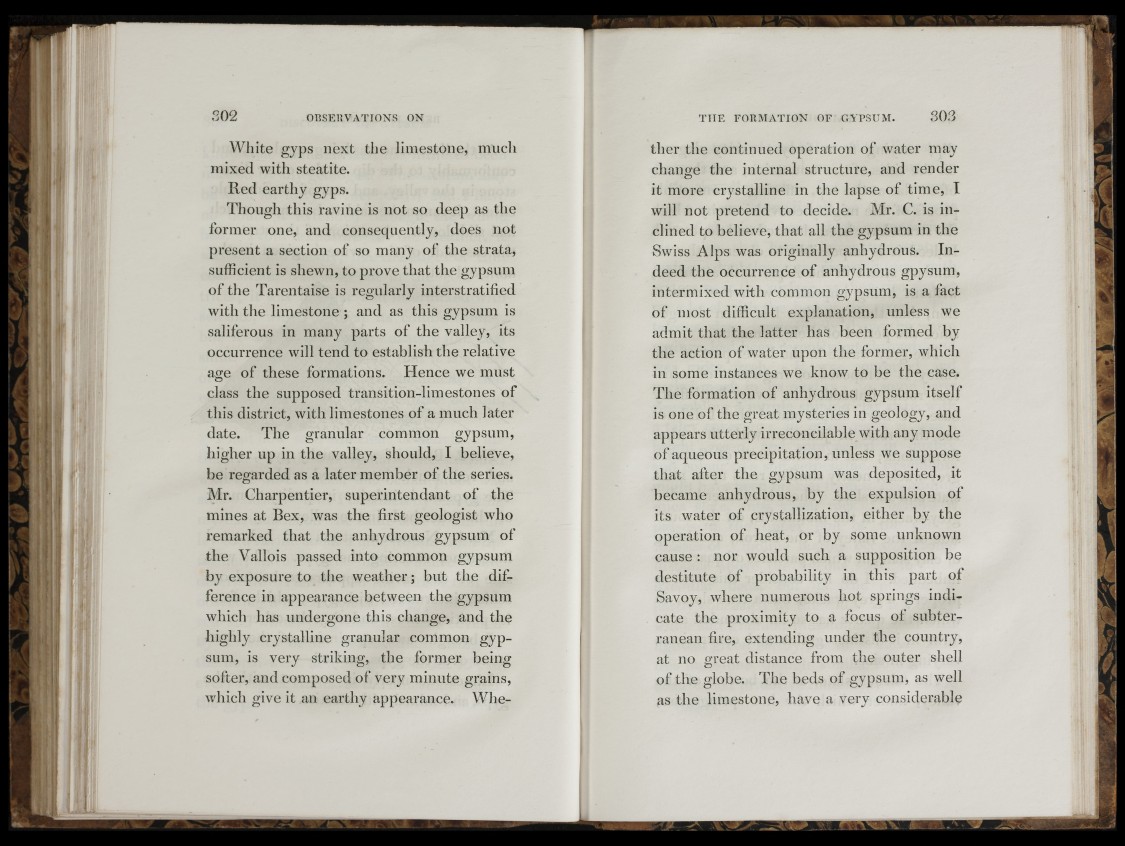
White gyps next the limestone, much
mixed with steatite.
Red earthy gyps.
Though this ravine is not so deep as the
former one, and consequently, does not
present a section of so many of the strata,
sufficient is shewn, to prove that the gypsum
of the Tarentaise is regularly interstratified
with the limestone ; and as this gypsum is
saliferous in many parts of the valley, its
occurrence will tend to establish the relative
age of these formations. Hence we must
class the supposed transition-limestones of
this district, with limestones of a much later
date. The granular common gypsum,
higher up in the valley, should, I believe,
be regarded as a later member of the series.
Mr. Charpentier, superintendant of the
mines at Bex, was the first geologist who
remarked that the anhydrous gypsum of
the Vallois passed into common gypsum
by exposure to the weather ; but the difference
in appearance between the gypsum
which has undergone this change, and the
highly crystalline granular common gypsum,
is very striking, the former being
softer, and composed of very minute grains,
which give it an earthy appearance. Whether
the continued operation of water may
change the internal structure, and render
it more crystalline in the lapse of time, 1
will not pretend to decide. VIr. C. is inclined
to believe, that all the gypsum in the
Swiss Alps was originally anhydrous. Indeed
the occurrence of anhydrous gpysum,
intermixed with common gypsum, is a fact
of most difficult explanation, unless we
admit that the latter has been formed by
the action of water upon the former, which
in some instances we know to be the case.
The formation of anhydrous gypsum itself
is one of the great mysteries in geology, and
appears utterly irreconcilable with any mode
of aqueous precipitation, unless we suppose
that after the gypsum was deposited, it
became anhydrous, by the expulsion of
its water of crystallization, either by the
operation of heat, or by some unknown
cause : nor would such a supposition be
destitute of probability in this part of
Savoy, where numerous hot springs indicate
the proximity to a focus oi subterranean
fire, extending under the country,
at no great distance from the outer shell
of the globe. The beds of gypsum, as well
as the limestone, have a very considerable
i
f«: